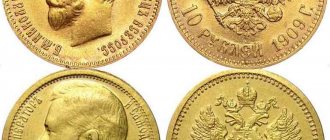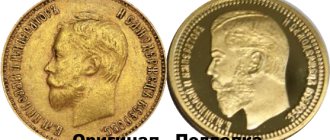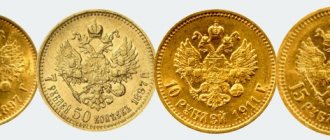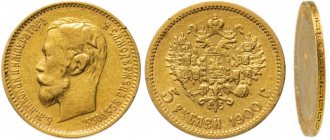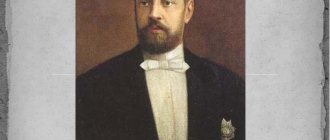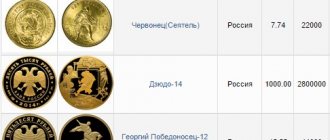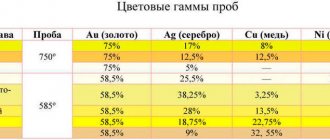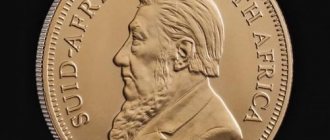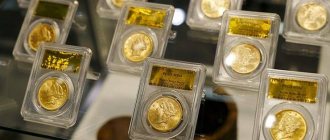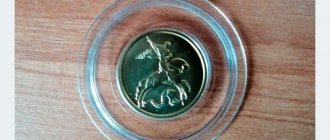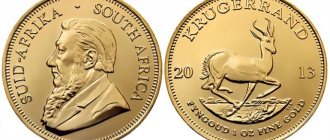Precious metal coins are not only a collectible or a means of payment, as they were several centuries ago, but also an interesting investment tool.
The value of gold has been steadily increasing over the years. I don’t advise you to immediately rush to buy investment coins in order to make good money on them: for now, buying them is much easier than selling them. I will tell you about how gold coins are sold at Sberbank. The price for them is set taking into account the bank spread.
Sberbank is the largest financial institution in the country. There you can not only buy coins made of precious metals, but also sell them if necessary. Sberbank’s online catalog has a huge assortment – more than a thousand copies, but not all are accepted from the public. Below you will find out which copies you can make money on, whether they all accept returns and where to sell a coin purchased from another bank or inherited from your grandmother.
Is it possible to return coins to Sberbank?
Today, branches can redeem coins purchased from Sberbank or other banks, provided that they are in the catalog. In addition, redemption must be allowed for a specific copy and quotes must be established. If in the catalog the column “Purchase cost” is indicated with a dash, the bank does not buy such copies.
Precious metal commemorative coins must be in their original packaging and not show significant damage. Investment requirements are not so stringent. Satisfactory quality of embossing and the presence of a protective tube are sufficient. Minor traces of oxidation, scratches and stains are acceptable.
Before visiting the bank, I advise you to check whether the branch you choose accepts gold coins and what the price is. The transaction is processed only if you have a passport, certificate and purchase receipt.
How to store investment coins
A purchased coin can be sold at a good price in the future only if it has no mechanical or chemical damage.
The coin must be reliably protected from exposure to direct sunlight, aggressive substances and temperature fluctuations. All this can damage her. It is better not to remove the coin from the transparent capsule in which it is sold, since the latter protects it from dents, scratches, chips and abrasions. You should not take the coin out of the capsule and touch it with your hands - there will be a fingerprint that cannot be removed. This will reduce the value of the coin.
Since coins will have to be stored for many years, it is better to use a safe for this. I recommend a burglar-resistant safe with a small mechanical or electronic combination lock. The price for such safes starts from 4000 ₽.
Read on topic: How to choose a safe for your home?
What gold coins does the SB of the Russian Federation buy?
Gold investment coins during buyback are classified depending on their condition. Sberbank has established two types of price lists - for coins in excellent and satisfactory condition. The price of the former is higher. If there is damage, the weight of the precious metal is assessed regardless of its collectible value and uniqueness. Engraving elements must be preserved.
Sberbank has approved the following rules for purchasing from the public:
- At the price stated in the price list.
- Commemorative - in excellent condition and original packaging.
- Investment - with uncirculated coinage quality, regardless of the presence of minor defects.
You can find the rules on the company's official website. Sberbank refuses to repurchase if the banknotes sold do not meet the approved parameters.
What taxes do you need to pay?
Bullion coins are property. Therefore, profits received from their sale are subject to personal income tax at the rate of 13%. If you bought a coin, sold it and made a profit, then you will need to report it on your tax return for the year. For example, in 2021 you sold a coin, you will need to file a return and indicate this income by April 30, 2022. The tax itself will need to be paid by July 15, 2022.
But if you own a coin for more than three years, then you no longer need to pay tax after selling it (clause 17.1 of Article 217 of the Tax Code of the Russian Federation). In this case, the date of purchase of the coin must be documented, otherwise tax may be charged on the full cost.
Read on topic: Who needs to pay taxes and how much in 2021
Denominations
The denominations accepted by Sberbank are divided into those purchased on an ongoing basis and periodically. At any time, you can sell domestic investment and some commemorative (anniversary) gold coins. Denominations issued in limited quantities are well appreciated.
Sberbank accepts the following Russian gold coins:
| Denomination, growing rubles | Name |
| 0,1 | Chervonets – 75, 77, 78, 79, 82 |
| 5 | Bogolyubov, Alexandrov, Pereslavl |
| 10 | Raymonda, Bolshoi Theater |
| 25 | Series “Zodiac Signs” |
| 50 | Mordovia, Universiade, Radonezh, Chekhov, Helsinki, V. Novgorod, Gogol, 1000 years of Kazan, Yaroslavl, Shein, Kalmykia, Turin, Games, Lermontov, Football, Athens, Khakassia, Games, Kremlin, Smolensk, Bobr, 60 years of Victory, Elk, Geographical Society, Police, Sberbank, Zodiac Signs Series |
| 100 | Yuriev-Polsky, Raymonda, Alexandrov, Leopard, Pereslavl, Bolshoi Theater, Nevelskoy, Monetary circulation |
| 200 | Springboard, Short track, Leopard, Bobsled, Judo, Hockey, Figure |
| 1 000 | Ingermanland, Figured, Flora |
| 10 000 | Sberdelo |
| 50 000 | Sberdelo |
Exchange methods
The exchange service is not provided at Sberbank. It can only be exchanged for banknotes, that is, sold. If you are into collecting and there are two identical pieces in stock, you can try to exchange it for one of similar value with a colleague - a numismatist or collector.
Another option - selling and buying a new one - may not be as profitable due to the bank spread (the difference between the sale and repurchase prices).
Kinds
Gold coins appeared long after the precious metal became a means of payment and proof of reliability and wealth. The most developed countries began to mint them. This emphasized their importance and had a positive effect on their image.
Royal
In Russia, gold coinage reached its apogee under Nicholas II. At that time, the empire was at the very peak of its economic development, and the country issued money of different denominations.
Many are still widely available today, so they can be classified as investment ones. Gold “Nikolai” are in stable demand on the market.
USSR
From the times of the Soviet Union, we still have a gold investment coin - “Sower” (the official name is “Chervonets”). It is not collectible or rare, but the demand for it is quite high.
Weight ¼ oz, 900 gold.
Modern Russia
Now our country can boast of a choice of several types of investment coins. The most famous is, of course, “St. George the Victorious.”
It has been minted since 2006 (the issuer is the Central Bank of the Russian Federation). Theoretically, it can serve as a means of payment - its denomination is 50 rubles, but it is unlikely that there will be anyone willing to pay with it in a store.
The front side depicts St. George the Victorious on horseback, slaying a serpent with a spear. Weight: ¼ ounce .999 gold.
There are also coins issued by the Central Bank as investment coins, but in limited editions for certain events. This fact indicates that they will become collectible in the foreseeable future.
The most famous of them are, firstly, the “Confederation Cup”, released for the said event in 2021. Since its circulation was only 15 thousand copies, it has every chance of being distributed among collections. Secondly, this is a copy released for the 2014 Sochi Olympics.
But the series in honor of FIFA, dedicated to the 2018 FIFA World Cup, is unlikely to become valuable, since its circulation is quite large.
Which gold coins are especially valuable?
The most expensive are the exclusive gold editions. Particularly valuable ones can cost up to 2-3 million rubles. They are distinguished by high quality of coinage and artistic execution. Expensive coins are associated with special periods and events in Russian history - the coronation of emperors, the reign of Catherine II, Peter the Great. The gold “History of Monetary Circulation in Russia”, 2009, costs more than 1.8 million rubles. The gold “Sedov” and “Kruzenshtern” are worth more than 1 million.
Expert opinion
Alexander Ivanovich
Private collector with 4500+ coins and bonds in his personal collection. Knows the value of each of them today.
Banknotes that are out of circulation and minted in limited editions are of particular collectible value. The price is high for copies that have a manufacturing defect, if they have passed the control system and are put on sale.
The most popular Russian investment coins are the gold “George the Victorious” 999 fine and the “Sower” (chervonets) 900 fine. They are not as liquid outside of Russia. Selling them in another country will be difficult. In this case, I advise you to invest in such popular examples in the world as the Austrian Philharmoniker, the Canadian Maple Leaf, the American Buffalo and Eagle, and the South African Krugerrand.
"Philharmoniker"
Krugerrand
"Maple Leaf"
"Buffalo"
What kind of coins are these?
Their difference from other types of assets (collectibles and commemoratives) is their increased liquidity. That is why they are called investment - because for an investor, the ability to quickly exchange assets for money is the main reason for the purchase.
Compared to commemorative and collectible items, they have no intrinsic value (design, limited edition, historical or artistic significance). Accordingly, they can be bought cheaper, but you cannot get additional income.
Bullion coins are issued double-sided, like most others: they have an obverse (front side) and a reverse (back side).
Is it profitable to sell rare coins to Sberbank?
Please note that old, rare, foreign and Soviet-style gold coins are not accepted at Sberbank. They sell for high prices to collectors at online auctions. A severely damaged copy will only be accepted at a pawnshop, having assessed the weight of the precious metal.
You can find out the approximate price on numismatic forums. I advise you to watch a video depicting the rarest and most expensive gold coins.
When selling domestic coins minted after 1991, pay attention to the spread - the difference between bank buying and selling rates. If you sell a copy that you have owned for less than 3 years, you will have to pay income tax - 13% on the profit received.
My advice to those who want to invest in gold bullion coins
1.
It is necessary to buy investment coins for a period of at least 5 years.
2.
To avoid becoming a victim of fraud, it is better to buy investment coins from a bank.
3.
Each bank sets its own prices for selling coins. It is better to study their offers and choose the most profitable one.
4.
Investment coins must be carefully stored and protected from mechanical and chemical damage. The better the condition of the coin, the more favorable the price it can be sold.
5.
You must keep all documents confirming the purchase of coins. This will help you avoid paying tax in the future when you sell them.
How the value of gold coins is assessed in Sberbank
The price is influenced by the following factors:
- appearance;
- presence of damage, defects;
- denomination;
- cost of precious metal;
- uniqueness (circulation, belonging to a series or collection);
- availability of a certificate.
Sberbank has approved two price lists. In accordance with them, money is issued for banknotes in excellent or satisfactory condition. A higher price will be given for a copy with an excellent appearance, without the slightest damage.
Foreign
Capitalist countries, much earlier than our country, became concerned with the minting of gold investment coins. Therefore, many of them have their own samples, some in a rich assortment. Many foreign copies are also very successful among collectors.
I'll name the most popular ones.
Krugerrand South Africa
The Republic of South Africa was the first to issue this type of investment asset. This happened in 1967, and it was named “Krugerrand” in honor of President Kruger, whose portrait is depicted on the obverse. The reverse contains an image of an antelope. Sample 917.
It was with the release of this coin that the gold standard of 1 oz (1 troy ounce) was adopted. From now on, they tried to produce coins with exactly this weight, and they are called ounces.
The Krugerrand is the most common investment coin in the world, so its liquidity is very high.
American golden eagle
One of the two most popular bullion coins in the United States. On its obverse is the face of the Statue of Liberty, and the reverse is decorated with an eagle sitting in a nest with an olive branch in its beak. An eagle sits in a nest with eaglets.
Available in 1/10 oz, ¼ oz, ½ oz and 1 oz 916 fine weights, $50 denomination.
American Buffalo
The obverse contains the head of an Indian by sculptor Fraser. On the reverse is an image of an American buffalo - buffalo. Made from 1 oz sterling gold, valued at $50.
It went on public sale only in 2006.
Austrian Golden Philharmonic
A famous Austrian bullion coin, the obverse of which depicts the organ of the Vienna Philharmonic (hence its name). It was the first to be minted in European currency. Denomination – 100 euros, weight – 1 oz, 999 fineness.
Canadian maple leaf
A coin widely known in investment circles with the profile of Queen Elizabeth II on the obverse. The reverse features a maple leaf, the symbol of Canada. One ounce coin, 50 Canadian dollars, 999 fine.
Chinese panda
This panda has long spread far beyond China. It is recognized as one of the most successful bullion coins of the 1980s.
Its obverse depicts the greatest landmark of the Celestial Empire – the Temple of the Sun. The reverse is occupied by a giant panda, the symbol of China. The denomination is 500 yuan, the weight ranges from 1/20 oz to 1 kg of pure gold.
Its peculiarity is that the Chinese changed the design every year in order to maintain increased demand. Some types of “pandas” even began to be used in collections.
Australian kangaroo
Produced by Australia's oldest mint. The obverse features a portrait of Queen Elizabeth II. On the reverse is a kangaroo, the famous symbol of the Australian continent. Like the Chinese "pandas", the image of the kangaroo is new every year. Denomination 100 Australian dollars, weight 1 oz.
This gold coin is commonly referred to as a “nugget”, as the 2007 issue featured the inscription “THE AUSTRALIAN NUGGET”. The nickname is firmly attached to the coin, and all over the world it is known as such.
The process of purchasing coins by Sberbank
Not all Sberbank branches accept gold coins. This depends on whether the unit has a specially trained expert. Whether it is worth bringing a gold coin to the branch nearest to you, you can check on the Sberbank hotline by calling 900. The list of accredited branches for making purchases and sales is also on the website in the section: https://www.sberbank.ru/ru/person/ contributions/values/mon.
Once you have chosen a branch, the sale proceeds as follows:
- Show the specialist the coin, the certificate for it, the purchase receipt and your passport.
- A Sberbank expert will examine and evaluate the item.
- If you are satisfied with the price offered, a purchase and sale agreement is signed.
- Money is issued in cash at the cash desk or transferred to a current card account.
How are they made?
Gold coins are usually minted from the highest standard of gold. Circulations may be different - under the order of the Central Bank or another large institution.
They differ in the level of mintage:
- UC (Uncirculated) – standard, medium quality, without complex patterns;
- Proof – highest quality, with a mirror surface; In coinage, a double blow with a plug is used.
The production itself is divided into several stages:
- Creation of a sketch by an artist upon special order.
- Making a cast from a sketch.
- The actual minting is made of gold.
The legislation allows placing orders for the minting of investment coins only to banks (or through their intermediary). This, on the one hand, limits the possibilities for the development of this market segment, and on the other, simplifies regulation in the field of operations with precious metals and the circulation of means of payment.
Alternative places of sale
Gold coins are sold in specialized markets and forums, to resellers and collectors. Severely damaged copies can only be returned to a pawnshop; in this case, the item of pledge will be assigned the category of scrap.
Expert opinion
Alexander Ivanovich
Private collector with 4500+ coins and bonds in his personal collection. Knows the value of each of them today.
The pawnshop issues money for its weight in gold, without taking into account the collectible and artistic value.
Internet auctions
Popular platforms in Russia where you can buy and sell gold coins are Avito, auction.ru, rarecoins.ru, numismatic.ru, wolmar.ru. The site displays an item at a predetermined price or waits for the buyer who will offer more than the rest.
You must pay a commission to participate in the auction. The advantage of the deal is that you can get the real value of a rare item for the lot.
Sale to private collectors
For a sale to a collector to be profitable, you need to have at least a little understanding of numismatics. The potential buyer will lower the price. If you want to sell a foreign, Soviet or ancient coin, you should look for a buyer on numismatist trading platforms.
Where to buy?
At the exchange price of gold or silver, you can buy coins anywhere that guarantees their authenticity. However, we must remember that banking institutions can introduce their own commissions or markups. And in pawn shops, coins may have cuts, which will complicate their sale in the future. Proof quality coins, also exhibited in pawn shops, often have coin field defects (fingerprints, scratches, acid stains), which completely destroys their collectible component.
It is worth asking in advance whether this coin was issued in any special capsule or other branded packaging. When purchasing, always check the integrity of the capsule (no cracks or even scratches), as well as its originality. With non-original or damaged packaging, a number of banks buy back coins at a large discount or refuse to buy them at all.
When investing in coins, it doesn’t hurt to remember four simple rules:
- Calculate the approximate profitability of the coin relative to the funds spent on it.
- Determine the investment period (the interval between purchase and sale).
- Don’t be lazy to monitor the price of precious metals every day, building a chart of growth or decline.
- Get as much information as possible about the selected coin (storage details, specific cases of problematic sales, possible collectible component, etc.).
As you know, the group of noble (or precious) metals consists of a trinity - gold, silver and platinum, as well as five platinoids - osmium, iridium, ruthenium, rhodium and palladium. The latter of them has long been used for minting investment coins and has earned the trust of many investors. Here the pioneers were exotic countries - Sierra Leone (1966) and Tonga (1967). Over half a century, various countries around the world have issued more than a hundred palladium coins. True, most of them have modest circulations. The most impressive productions appeared within the series “American Eagle” (USA), “Maple Leaf” (Canada) and “Russian Ballet” (USSR/Russia). In addition, there are bimetallic coins made of gold and palladium. But the most amazing coin of the British Virgin Islands is the “Four Elements” with the image of a sailboat, which consists of all four investment metals with a total weight of half a troy ounce: gold (4.221 grams), silver (4.56 grams), platinum (2.78 grams) and palladium (3.9 grams).
But is it worth paying attention to the remaining four? After the sharp increase in the price of rhodium (up to $10,000 per troy ounce in 2008), mints began to think about producing banknotes from this metal. Here the main difficulty is not so much its cost as its refractoriness. The first to market a coin-shaped token made of rhodium (2009) was the American company COHEN MINT. However, this one-gram product was initially declared not as a means of payment, but as an investment object. Other countries are also starting to look at rhodium. An example is the 2021 Tuvalu $100 "Southern Sea Dragon" - one ounce of pure rhodium (mintage of 1,000). The Swiss company Produits Artistiques Métaux Précieux is also trying to develop rhodium as an investment product, offering the purchase of rhodium bars in 1 and 5 ounces.
Almost the entire set of precious metals was implemented by Rwanda, which released a set of seven coins in 2015, which, in addition to rhodium, also added ruthenium and iridium. However, it is worth considering that the weight of these miniature coins with a diameter of 11 mm is purely symbolic (4 positions of 1.244 grams each and 3 positions of 0.311 grams each). Actually, this is not so much an investment object as an exotic selection of samples of precious metals, which is almost impossible to quickly sell at a market price. And yet, let us note that the price of a troy ounce of ruthenium at the end of 2021 was $270, iridium - $1,710, and by mid-January 2021, rhodium had risen to a record value of $19,500 per ounce, and by the beginning of March it had come close to a value of $30,000.
